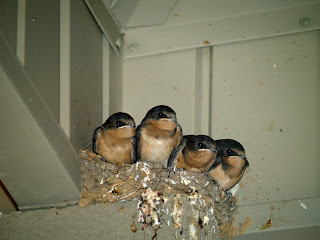The rocky mountain mule deer is the smallest member of the deer family found in Utah (elk and moose are much larger.) Rocky Mountain mule deer are also the largest breed of mule deer. The Rocky Mountain mule deer gets its name from the large mule-sized ears. Rocky Mountain mule deer stand three to three and a half feet tall at the shoulder, with bucks (males) usually weighing 125 to 250 pounds, though some may weigh as much as 400 pounds. Does (females) usually weigh be- tween 100 and 150 pounds. During the winter, mule deer have a heavy, dark grey coat of long guard hairs covering a dense underfur. This is shed in the spring for a lighter reddish-tan coat. Fawns are born with a light brown coat covered with numerous white spots. By the time the fawns are approximately three months old, the spots will have disappeared.
The mule deer has a white rump patch and a narrow black-tipped tail. It holds its tail down when it runs, unlike its cousin the white-tailed deer, which raises its bushy white tail like a flag. The white rump is a follow me sign that many herd animals exhibit.
Pregnant does leave their herds and find isolated
thickets in which to have their fawns. Older does commonly
have twins, while yearling does will usually have a single
fawn. Triplets are uncommon. Fawns average about eight
pounds at birth, and are able to suckle and follow their
mother within a short time of being born. Fawns grow
rapidly during the summer months, reaching weights of 70 to
80 pounds by November. I notice that the doe in the photo seems to be a bit thin, but as I said, we had a harsh winter and she is nursing twins.
Mule deer are browsers. They eat a variety of plant life and can become pests to avid gardeners. It is important for the mule deer to put on weight during the summer season in order to make it through the cold winter when the vegetation is less plentiful. Many researchers believe that mule deer have the ability to
pick and choose the plants with the highest nutritional value
during each season of the year. During
the winter and early spring when there is little ground forage
available, mule deer are on a starvation diet of twigs and
branches. This dry, woody vegetation is difficult to digest
and lacks enough nutritional value to maintain body condition. During these periods of inadequate nutrition, mule deer
use stored body fat to survive.






























